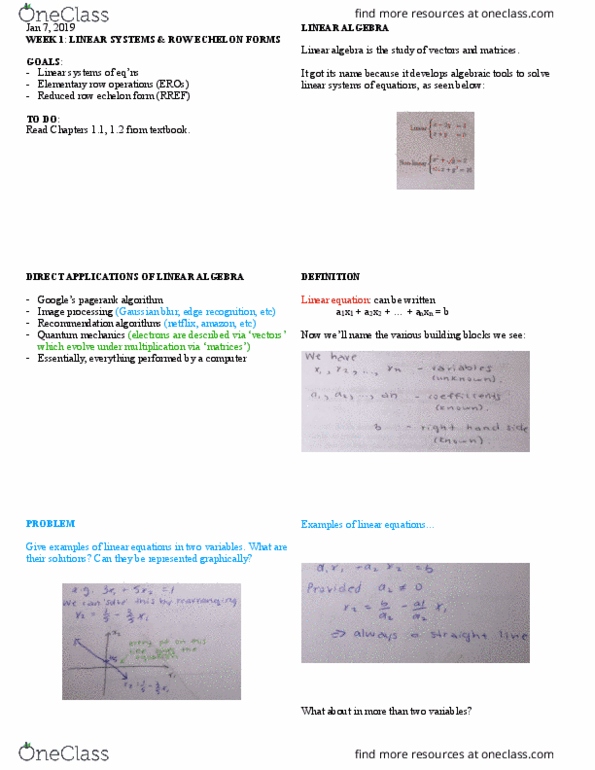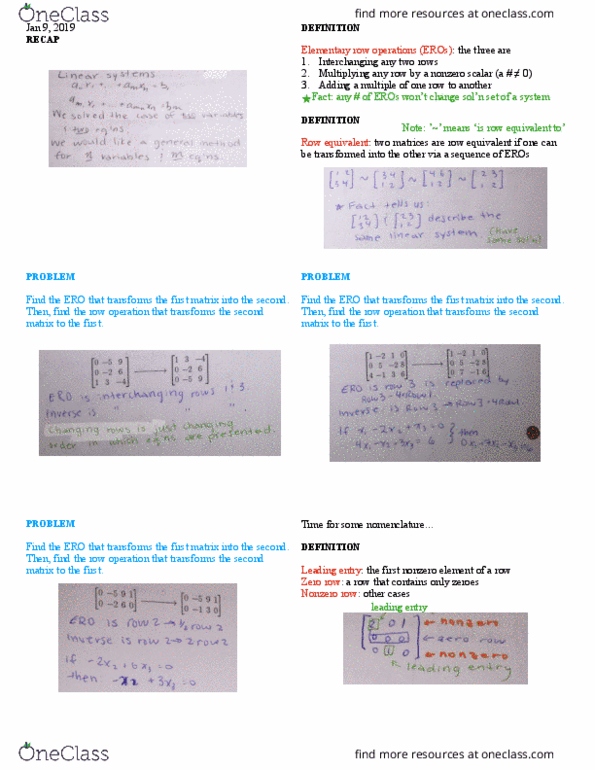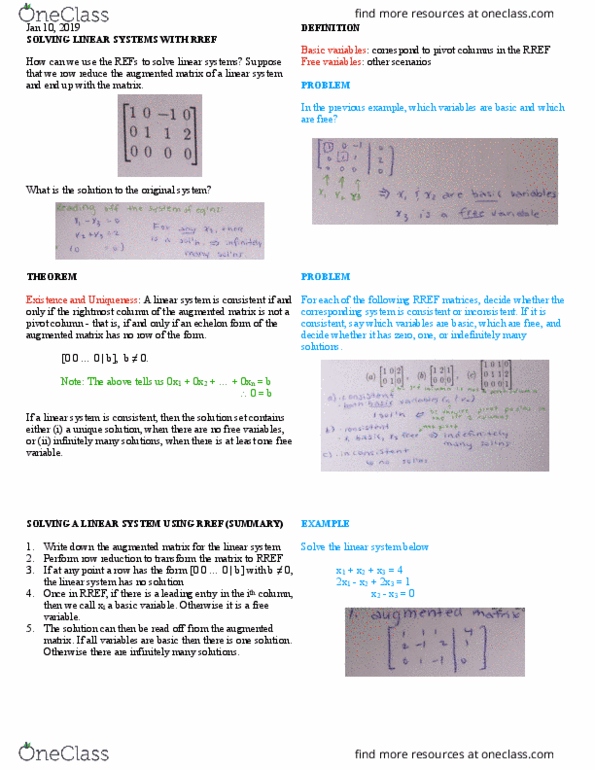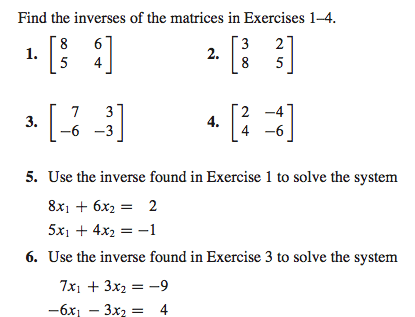MATH 112 Lecture 2: Elementary row operations, row equivalency, example problems, leading entry, zero/nonzero row, row echelon form, reduced row echelon form, pivot positions and columns, row reduction, theorem
MATH 112 verified notes
2/37View all
1

MATH 112 Lecture 1: linear algebra, applications, linear equation, examples, linear system, solution set, consistency, introduction to matrices
2

MATH 112 Lecture 2: Elementary row operations, row equivalency, example problems, leading entry, zero/nonzero row, row echelon form, reduced row echelon form, pivot positions and columns, row reduction, theorem
3

MATH 112 Lecture 3: solving linear systems with reduced row echelon form, basic and free variables, existence and uniqueness theorem, examples, summary
Document Summary
1: multiplying any row by a nonzero scalar (a # 0, adding a multiple of one row to another. Fact: any # of eros won"t change sol"n set of a system. Row equivalent: two matrices are row equivalent if one can be transformed into the other via a sequence of eros. Find the ero that transforms the first matrix into the second. Then, find the row operation that transforms the second matrix to the first. Leading entry: the first nonzero element of a row. Zero row: a row that contains only zeroes. Row echelon form (ref): a matrix is in ref if it satisfies the following two conditions: all nonzero rows are above all zero rows, the leading entry of any row is strictly to the right of the. Consider the matrix a from the previous slide. If not, find a sequence of eros to transform it accordingly.






